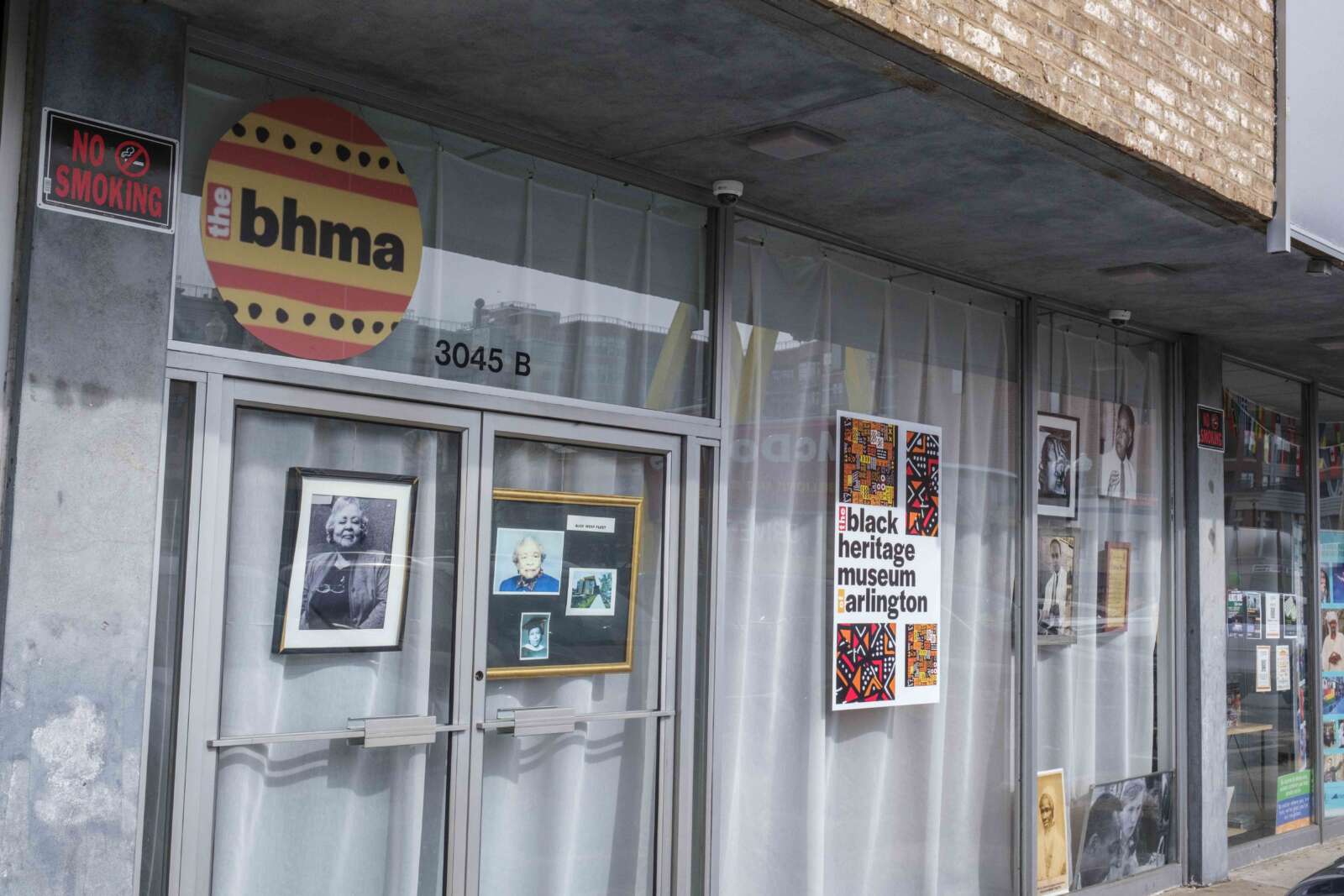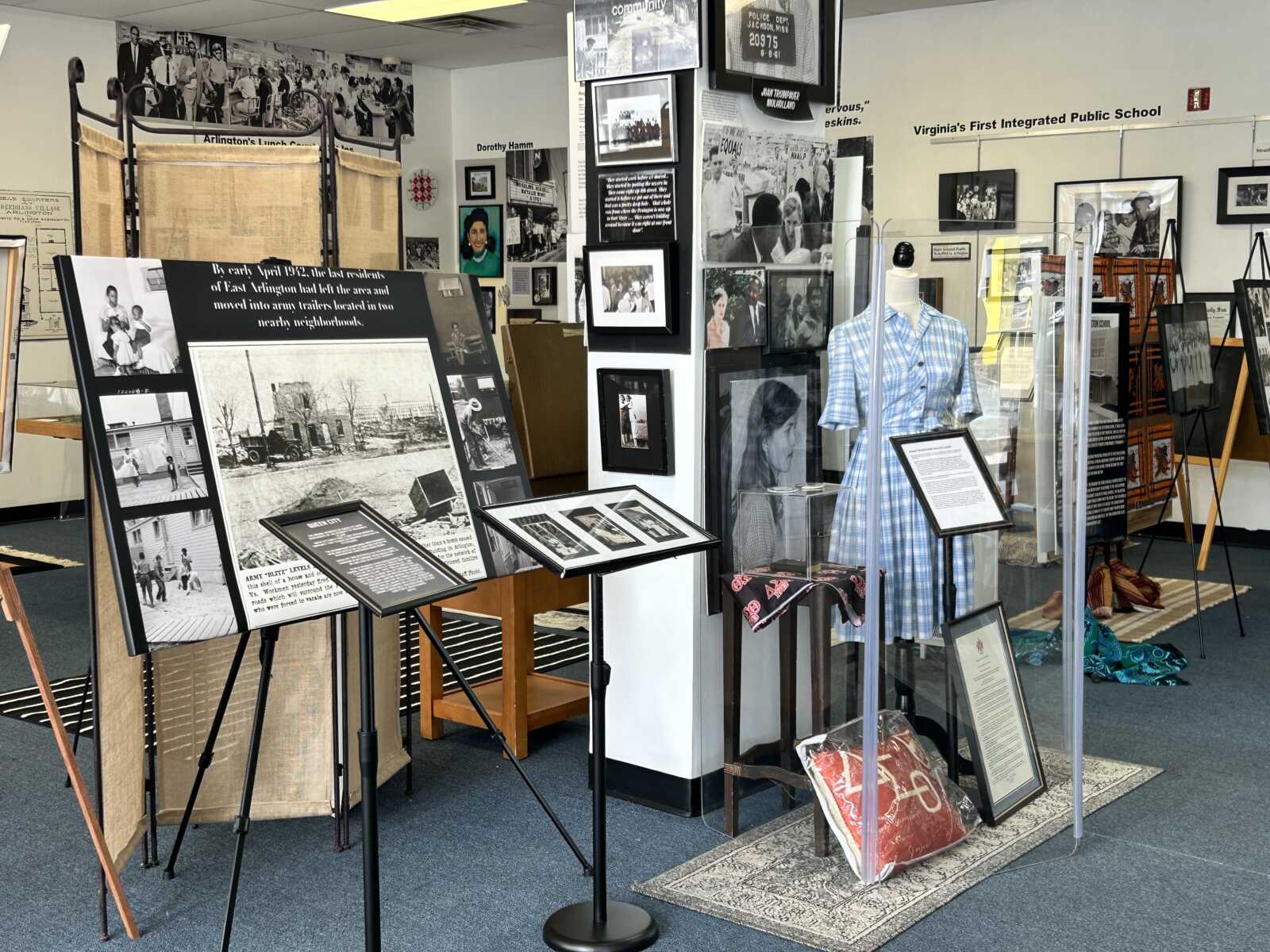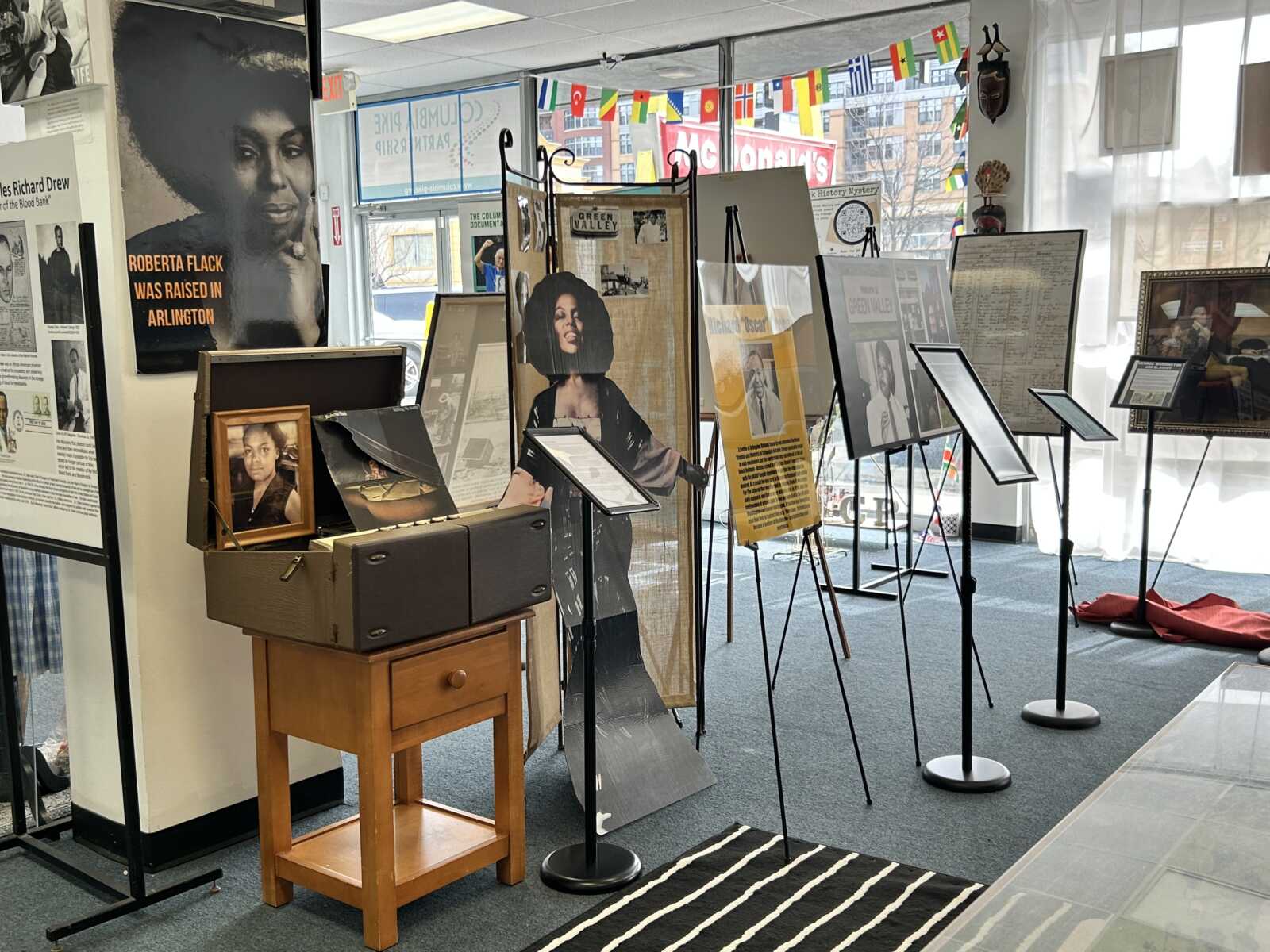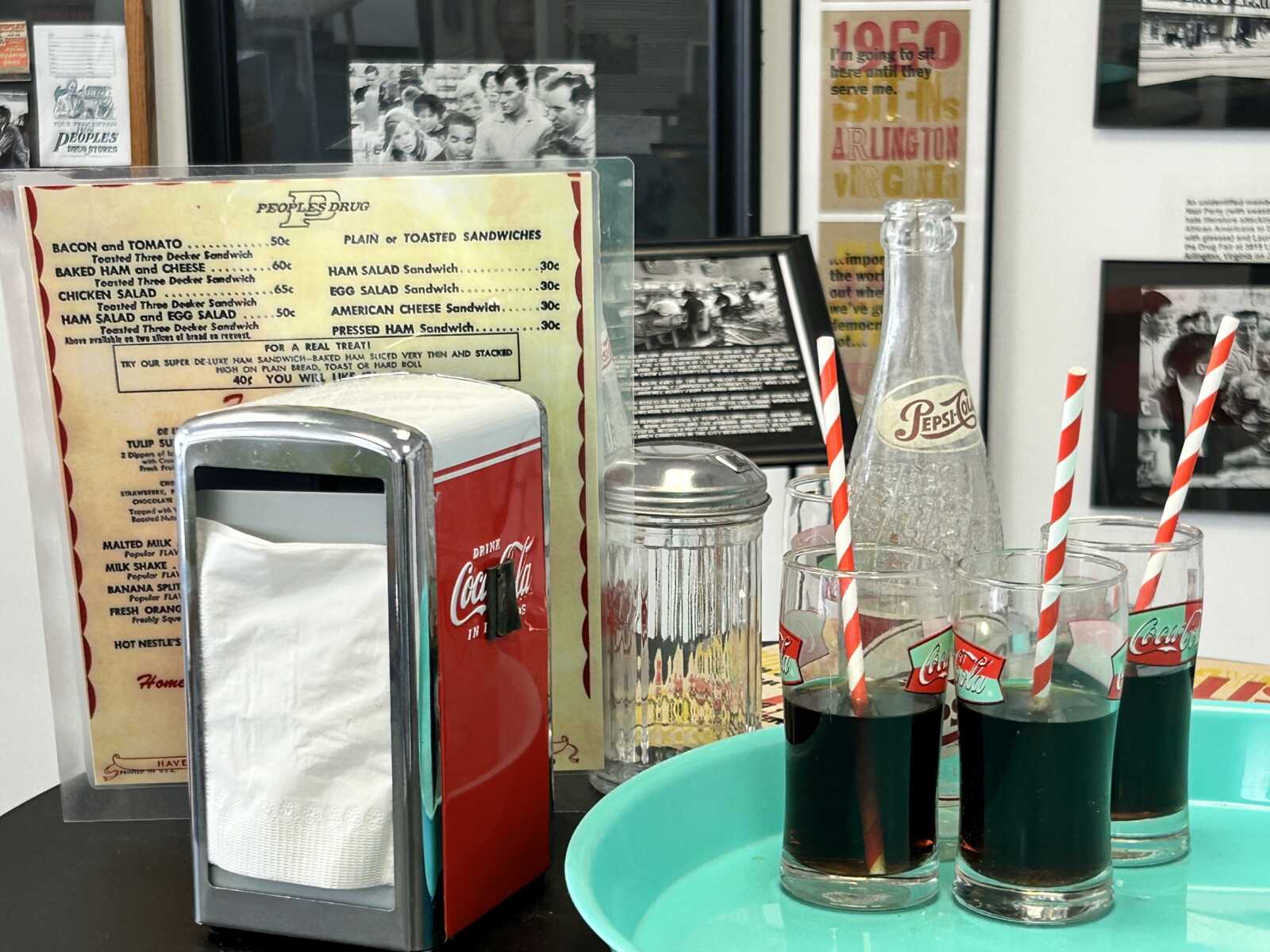After moving from one temporary location to another on Columbia Pike, The Black Heritage Museum of Arlington has settled into its new digs — for now.
The museum is currently located on the first floor of the Ethiopian Community Development Council building (3045B Columbia Pike), but it has bounced around the Pike ever since it transitioned from an online museum to a physical location in 2018.
Museum President and Director Scott Taylor tells ARLnow he is still looking for a permanent home for the museum that stays close to the Pike.
“We were across the street, then we were down the street, now we’re here,” said Taylor. “I would love us to stay in this corridor of Columbia Pike because there’s so much history here.”
Taylor told ARLnow that the museum’s current location was built on Camp Casey, which was an African American Civil War camp from 1862-1865. The home of an enslaved man in the late 1800s, is down the street and the historical African American neighborhood of Queen City was located nearby. Back in the day, he said, the Pike had clear views of Arlington House, the historic home of Confederate Gen. Robert E. Lee.
Taylor’s appreciation for history is what has kept him at the museum without any compensation. He said that the stories of his ancestors inspire him.
“I’m always around these stories and these people, so it gives me energy just to keep pushing,” said Taylor.
Taylor devotes a lot of time and energy toward the museum’s success, which has seen an uptick in attendance this month for Black History Month. Much of that time is spent on fundraising to cover the high cost of rent and exhibits, as the museum does not receive aid. Amazon gave the museum a grant in 2019 but since then, the money for the exhibits have come out of his own pocket.
“Right before Covid, I was driving an Uber as a part-time to have money to pay for the things that we needed here,” said Taylor.
Taylor also said that he would host fundraisers, sell merchandise and write a monthly newsletter to inform people about the museum.
Despite the financial hardships, Taylor said that he does this work “all day, every day” because it matters to him.
“I live and breathe this and I don’t expect anybody else to do that,” said Taylor.
The museum has kept busy in February co-hosting events for Black History Month, but there are a few more to look out for as the month closes out. They include a photo scavenger hunt featuring historic landmarks, taking place all this month, and, in partnership with the Arlington Historical Society, the installation of “stumbling blocks,” or bricks with the names of enslaved people, at former Arlington plantations.
Taylor said he is happy the museum is involved in partnerships this year as opposed to hosting individual events. He said that he hopes more partnerships come outside of Black History Month.
“I’m trying to convey to people that you don’t have to just do this once a month or once a year — we can do this all-year round,” said Taylor.
Taylor said that Black history is American history and that it should not only receive attention in February. He said he hopes his efforts at the museum will have the impact on others that it did on him.
“Arlington is creating a voice for these people, a lot of them were enslaved at one time, a lot of them sacrificed their time, jobs and livelihoods to make things better for me,” said Taylor. “Hopefully, I’m doing the same. “






